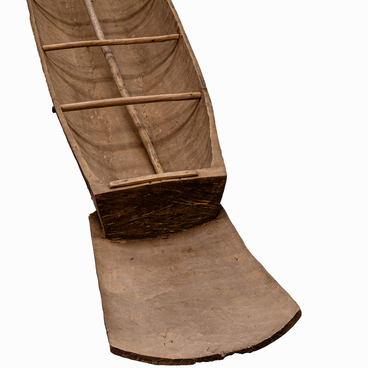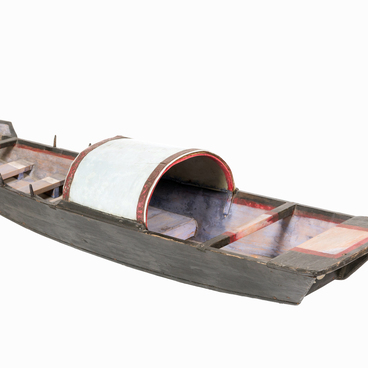The ancestors of the Negidals, a small Tungus-Manchurian people of the Amur region, maintained kinship ties with Evenks and came into contact with local aborigines, having developed as an ethnos by the end of the 12th century.
The shamanic costume of the Negidal people absorbed many elements from the culture of neighboring peoples, which resulted in the diverse design of such clothing. A novice shaman’s attire included a belt, a tambourine, a robe and an apron. The more experienced ones supplemented the outfit with skirts, shoes, hats and other items.
Professional shamans had two costumes. One consisted of a wrapover cloth robe decorated with hanging strips of animal skins, a leather cap of a special cut and other standard items: a rattling belt, mirrors, apron and mittens. Another costume resembled the Evenki outfit and was abundantly decorated with fringe.
The Negidal shaman’s jacket on display belongs to the latter type. This piece of clothing was made in the late 19th — early 20th century. The jacket was made of deerskin. Shamanic vestments were believed to be made only of wild deer skin, sometimes of bear skin.
The jacket embodies the image of a bird. It was believed that it was the bird that took the shaman to other worlds during the kamlanie ritual — communication with spirits. The bird symbolism of the costume was reinforced by fringe (made of deerskin, fabric, lace, or leather), which was sewn to the sleeves. It made them look like wings or plumage, and the fringe sewn to the hem and back looked like a tail.
The jacket protected the shaman from the effects of evil forces. Two metal plates in the form of human bones engraved with snakes and lizards were attached to the full-length sleeves from the back. It is believed that the skeleton on the costume represented the spirit of the shaman.
Metal horns and a metal
strip, which could symbolize the tail of a bird, were fastened on the back of
the jacket. The horns could only be worn by experienced shamans who had won
many victories in the fight against evil spirits. On the chest an image of a
circle with four equal segments was placed, with birds inside two of them were
depicted. Researchers believe that this is an image of the sun, which reflected
the ancient myth about the origin of the world — about its creation by birds.






